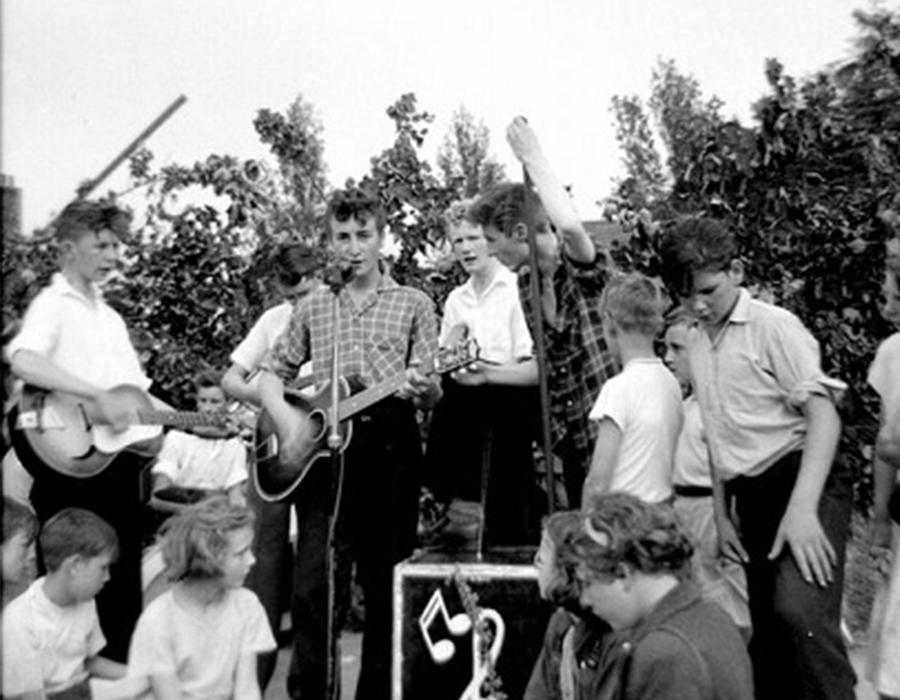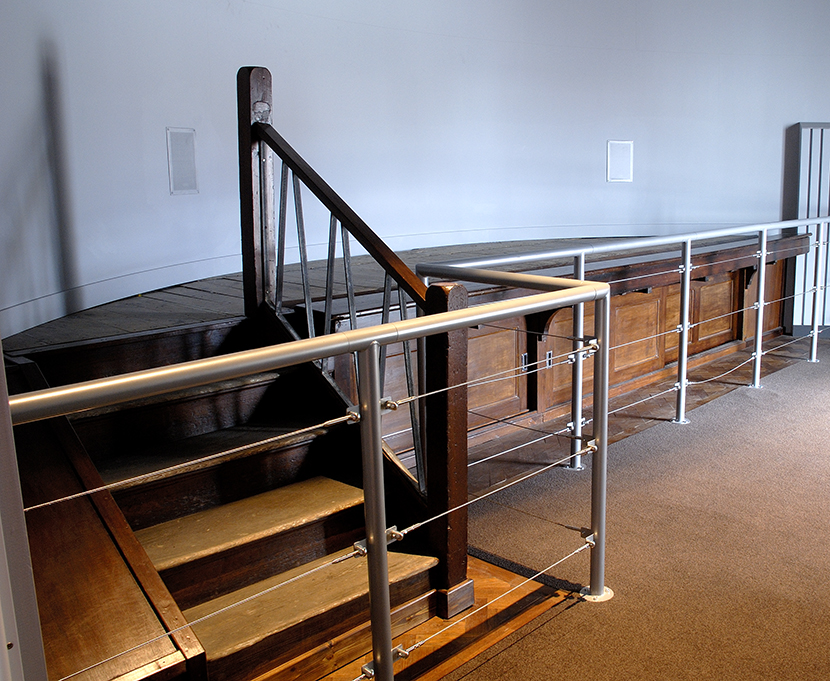When Paul McCartney met John Lennon
History was made in 1957 on a small Church Hall stage in Woolton, Liverpool.

Lead image: John Lennon plays guitar on stage with the Quarrymen at St Peter's church fete, Woolton, Merseyside, 6 July 1957. Photo: Geoff Rind
The Beatles story was no romantic, overnight sensation. In those early years, slogging it, desperately trying to get a break, John Lennon all too regularly needed to raise the group’s spirits with the rallying cry of, "Where are we going, fellas?" "To the top, Johnny!" they’d chime back. "Where's that fellas?" he’d ask, before the defiant retort came back, "To the toppermost of the poppermost!" The Beatles played here, there and everywhere in that quest to ‘make it’. But where does the story really begin?
That meeting didn’t just change the lives of John and Paul, it was the spark that lit the creative touch paper on a cultural revolution that would reverberate around the world, reshaping popular music forever.
Many places can lay a very justifiable claim to be the birthplace of the Beatles phenomenon. The Casbah Coffee Club, The Jacaranda Club, The Cavern Club, the seedy clubs of Hamburg, even Litherland Town Hall, all played a part. Some, like the Cavern, were hugely influential in launching the Fab Four to the toppermost of the poppermost. But for me, it really all began the day John met Paul at St Peter’s Church Hall fete in Woolton on 6 July 1957. It’s difficult to think of a more un-rock-and-roll location than a suburban church hall stage and it’s even harder to think of a more profound moment in musical history. That meeting didn’t just change the lives of John and Paul, it was the spark that lit the creative touch paper on a cultural revolution that would reverberate around the world, reshaping popular music forever.

What makes that first meeting so momentous wasn’t just that they met, but how and why. Although not exactly planned, this was no chance encounter. They met because of their fierce passion for music. Weeks after Paul's 15th birthday he was invited by his school pal, Ivan ‘Ivy’ Vaughan, to see his mate John’s skiffle group, The Quarrymen, play at the local church fete. Curious, he agreed. And he thought there may just be some girls there too. John and Paul were bright Grammar-school boys. Once they heard Elvis taking that walk down lonely street into 'Heartbreak Hotel' in 1956 – a seismic event in their lives - they were mentally checking out of academia and dreaming of a world of music and thrills – a life in rock and roll. But how to make it happen?
John’s Aunt Mimi expected him to pick a career. Despite her hopes, the life of a ‘brummer striver’ - John’s description of miserable life in a hated job - was not for him. For Paul, ever the diplomat, education could go on the back burner. He just wouldn’t tell his dad. On the day of the fete, The Quarrymen first played in a field under the blue suburban skies of a glorious Woolton afternoon. Paul was immediately intrigued. This group of schoolmates from Quarry Bank High School had some chutzpa. When he heard them perform the little-known doo-wop song 'Come Go With Me' by The Del Vikings, replete with John’s cleverly improvised lyrics, he was smitten.
John looked great, certainly knew his music and had attitude. Paul and Ivy mooched about the fete until the evening, resolving to see them perform in the church hall. John was clearly the leader of The Quarrymen. They were his gang, no one could doubt or challenge that. When the group, together with Ivy and Paul, were all kicking their heels waiting for the evening’s performance in a small ante-room, just off from the stage, Paul, quite audaciously, asked for a ‘go’ on John’s guitar. He correctly re-tuned it, turned it upside to be able to play it left-handed and treated the gang to an impromptu, word perfect, virtuoso performance of Eddie Cochran’s minor hit, 'Twenty Flight Rock'.
After playing a few other songs including one on piano in front of the stage too, it was John’s turn to be impressed. At 16, John was over a year and half older than Paul. He hid his admiration, but recognised that McCartney was good and had quite a musical repertoire, with tastes similar to his. He looked a bit like Elvis too and was clearly head and shoulders above everyone else in the group, maybe even him. What made their first meeting so deliciously intriguing was that in that first brief coming together, all the traits that we recognise in John and Paul, were tantalisingly glimpsed then too; ambitious and competitive, musically inquisitive and open, single-minded and with a steely determination to pursue their own musical interests in their own way and on their own terms. And it all happened beside and on the church hall stage in the local village fete.
When Paul climbed the steps of that stage and took a left into the ante-room, he didn’t know it but he and John were at the start of a musical odyssey that would change theirs and so many lives forever.
When Paul climbed the steps of that stage and took a left into the ante-room, he didn’t know it but he and John were at the start of a musical odyssey that would change theirs and so many lives forever. A few weeks after that fateful meeting, John asked him to join his group. Within months they were writing original songs together - eyeball to eyeball - musical soulmates, with an unspoken bond. Success would be a long time coming but they were on their way…to the toppermost of the poppermost.
You can see the St. Peter's Church Hall stage, where John met Paul, in the Wondrous Place gallery at Museum of Liverpool. The gallery celebrates the city’s trailblazers across music, sport, stage and screen, reflecting the city's creative expression and influence through exciting new displays and immersive experiences.
